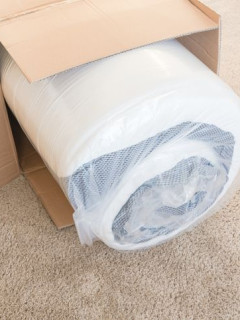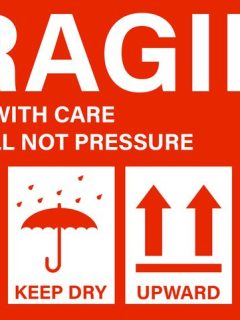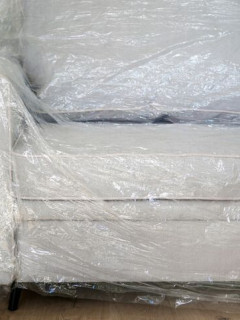Cats and cardboard boxes are a perfect combination. Virtually every kitty owner knows the importance of a seemingly ordinary box or even a piece of cardboard left over from unpacking a parcel. For any feline pet, an old cardboard box becomes a cosy and safe hiding place. Wondering how to make a cat house out of cardboard? Read our article and find out!
What will you need to make a cardboard cat house?
The easiest way to make a cardboard cat house is from an old box or a solid cardboard box. Here is a list of what you need to collect before you get started:
- Cardboard – The thicker the better. You may also be tempted to reinforce the edges with extra strips of material;
- Scissors or a wallpaper cutter – these will be useful for cutting out the individual parts of the house;
- Packing tape – Packing tape – essential for reinforcing and stiffening the whole structure;
- Glue – we recommend special adhesives for paper which are made on a water basis. We recommend avoiding those with substances in their composition that can harm the cat. Instead of traditional glue, you can also use the one designed for hot gluing;
- A blanket, fleece or soft cushion – whatever the future occupant of the cottage likes to sleep on;
- Accessories to decorate the cottage – such as markers, coloured paper or ribbons.
How to make a cardboard cat house step by step?
Wondering how to easily build a cardboard cat house? Follow our tips. Here’s what you need to do:
- Prepare thecardboard box – make sure it is clean. It is also best to choose a cardboard box with flaps that can be cut off or used as part of the roof structure. You can also use several boxes, which you will later join together to form a multi-storey structure;
- Cut outthe holes – use scissors to cut out the entrance for the cat. Make sure it is the right size for your pet to fit in. You can use a compass to cut out the perfect circle, or if you don’t have one to hand, you can stick a plate to the cardboard and trace the shape;
- Glue the cardboard together – do this step if you want to create a multi-storey house. Using duct tape or sturdy glue, join all the boxes together;
- Construct the roof – the easiest way to do this is to glue the cardboard flaps together, but depending on your manual skills, you may be able to use cardboard scraps;
- Decorate thehouse – paint it with markers, stick decorations on it or attach cat toys;
- Pad the floor of the cat house with a soft material – you can place a cushion or blanket inside, for example. However, remember that not all cats like to sleep on soft surfaces, so choose what your cat likes.
How do I prepare a cardboard cat house for winter?
As is well known, cats love warmth above all else – they bask in the sun on summer days, and when winter arrives, they lie down near a radiator, fireplace or other heat source. However, they don’t give up going outside or to the balcony. Therefore, if you are planning to build a cardboard house to put both indoors and outdoors, be sure to insulate it.
How do you protect a cardboard box from damp and the cold? Here’s what you can do:
- Pad the house with thick material – for example, place two blankets or extra fleece inside;
- Wrap the cardboard box with stretch foil – especially the bottom of the box. You can wrap it in several layers;
- Insulate the walls and roof – you can use a bedspread, a warm fleece blanket for this or be tempted to permanently upholster the cottage with fabric.
What to keep in mind when building a cat house?
When building a cat house, remember to make sure it is the right size. Also bear in mind that purrs tend to prefer rooms that are too cramped rather than too spacious. If, on the other hand, you are constructing a cat shelter for the winter, you must also prepare yourself for the fact that the cardboard box will have to be replaced after a few months of standing on the balcony, despite its protection.
And don’t forget the cat toys – placing them inside the house or attaching them permanently to it will make your pet use it even more eagerly. It is also important to use quality and pet-safe materials, such as using water-based glue, and to secure the box firmly – otherwise the structure may fall apart.
Cat house ready, but cardboard boxes still lingering in your home? Our blog offers tips on what to do with cardboard boxes after a move. Read on and find out!













